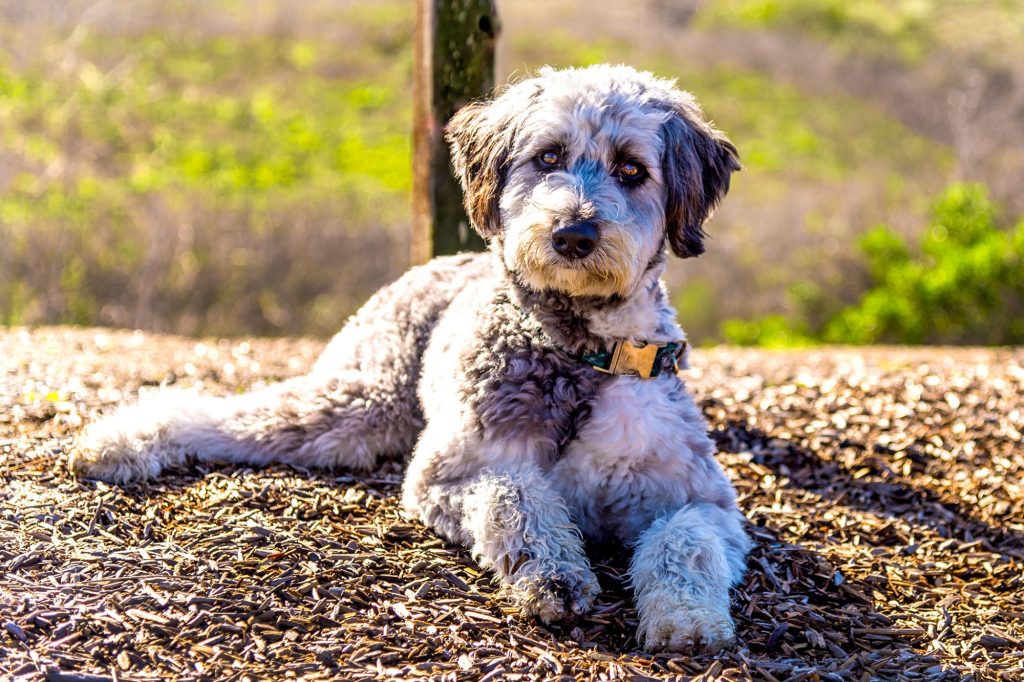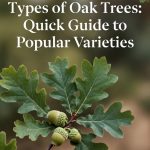Usually found in standard or miniature sizes, these dogs are a cross between an Australian Shepherd and a Poodle. It’s no secret that these small doodles are super smart dogs because both breeds are considered canine Einsteins.
Aussiedoodles are the offspring of deliberate crossbreeding between two dog breeds. It’s like opening a birthday present when you welcome a crossbreed into your home and heart. You never know what will be inside.
Many assume crossbreeds combine the best characteristics of two or more breeds, but that’s not always the case. It is not always possible for breeders to control how genes combine and express themselves.
An Aussiedoodle’s activity level ranges between moderate and high. Dogs need daily walks or active playtime and can participate in dog sports such as agility, flyball, obedience, and rally. It is also possible for them to be excellent therapy dogs.
What is an Aussiedoodle?
Among the many Doodle mixes gaining popularity, the Aussiedoodle is one of the most popular. Aussiedoodles are crosses between Poodles and Australian Shepherd Dogs and are not to be confused with Australian Labradoodles.
According to the size of the Poodle parent, Aussiedoodles come in various sizes. Miniature Poodles and Standard Poodles are suitable for Australian Shepherds since they are medium-sized dogs. In some cases, Miniature Aussiedoodles have been back bred to Toy Poodles, creating Toy Aussiedoodles.
Doodle mixes are incredibly adorable, and the Aussiedoodle is no exception. Originally bred as a cross between an Australian Shepherd and a Poodle, the Australian Shepherd Poodle combines the beautiful colors of the Shepherd with the hypoallergenic coat of the Poodle.
This includes sable, phantom (black, brown, and blue with tan markings), tricoloured merle, and particoloured (black, red, brown, blue, and white). A wavy or tight curl coat is usually found on him.
The Standard mini aussiedoodle measures between 15″ and 23″ from paw to shoulder. It is expected that the weight will range between 45lbs and 70lbs. Miniatures will be smaller by definition, with an average weight between 15lbs and 45lbs and a height between 10″ and 15″.
As with any mixed breed, some Aussiedoodles fall outside of the size range as shown by the averages, typically weighing between 25 and 70 pounds and measuring between 10 and 20 inches tall.
Aussiedoodles Generations
Aussiedoodles come in a variety of generations and combinations just like any other Doodle mix
F1 – First cross between an Australian Shepherd and a Poodle
F1b – A reverse F1b is an F1 Aussiedoodle crossed with a Poodle or Australian Shepherd.
F2 – The doodle is a cross between two F1 Aussiedoodles
F2b – An Aussiedoodle that has been reverse-bred to either a poodle or an Australian shepherd (reverse F2b).
Multigenerational – They are classified as multigenerational when they are bred from second-generation Aussiedoodles and beyond.
Is it possible to breed two Aussiedoodles?
When we discuss breeding Doodles, we often use terms such as F1, F2, and multigenerational. Undoubtedly, most people know that an F2 is a Doodle bred from two Doodle parents.
The range of animals that can be produced makes this combination not the most desirable for most breeders. There is a phenomenon known as the grandfather effect that causes this.
The furnishing gene (beards and moustaches) is inherited by most F1 Doodles, and the non-furnishing gene (smooth faces of Australian Shepherds, Golden Retrievers, etc., Depending on the Doodle mix we are looking at) F2 Doodles can inherit any combination of these genes.
A furnished puppy is produced by two copies of the F gene, a furnished puppy by one copy of the F and N gene, and a flat-coated puppy by two copies of the N gene.
F2 is less common or sought after among Aussiedoodles for a much more sinister reason. Merle’s genes cause this. Although merles are undoubtedly beautiful and highly prized coat colors, they are also associated with major health risks.
The merle gene causes a genetically mottled coat pattern. Furthermore, it contributes to the pigmentation of the skin. Genes responsible for genetic blindness and deafness are also present in this gene. Dogs of any breed that inherit only one copy of the merle gene will have mottled patterns and merle coloring, but they are unlikely to suffer from the eye or ear problems.
We have a 25% chance of inheriting two copies of the merle gene if we breed two merle dogs together. These pups are often predominantly white with one or two blue eyes and are highly likely to be blind, deaf, or both. Consequently, mating two merle dogs are unacceptable in any purebred; if done, the pups cannot be registered.
Since Doodles cannot be registered, it is especially important not to breed two merle dogs or dogs carrying the merle gene to avoid seriously ill puppies. At first glance, it seems simple. As long as you breed a merle Aussiedoodle to a non-merle Aussiedoodle, it will be fine, right? It’s not true! You may have an Aussiedoodle with the merle gene that appears tri-colour, bicolour, phantom, or solid-colored.
Cryptic or phantom merle is the name given to this phenomenon. The resulting pups could still suffer from eye and ear problems if you mistakenly breed a cryptic merle to a merle-colored dog or another cryptic merle. Therefore, you should never breed an Aussiedoodle to another Aussiedoodle unless both parents have been DNA tested for the merle gene.





